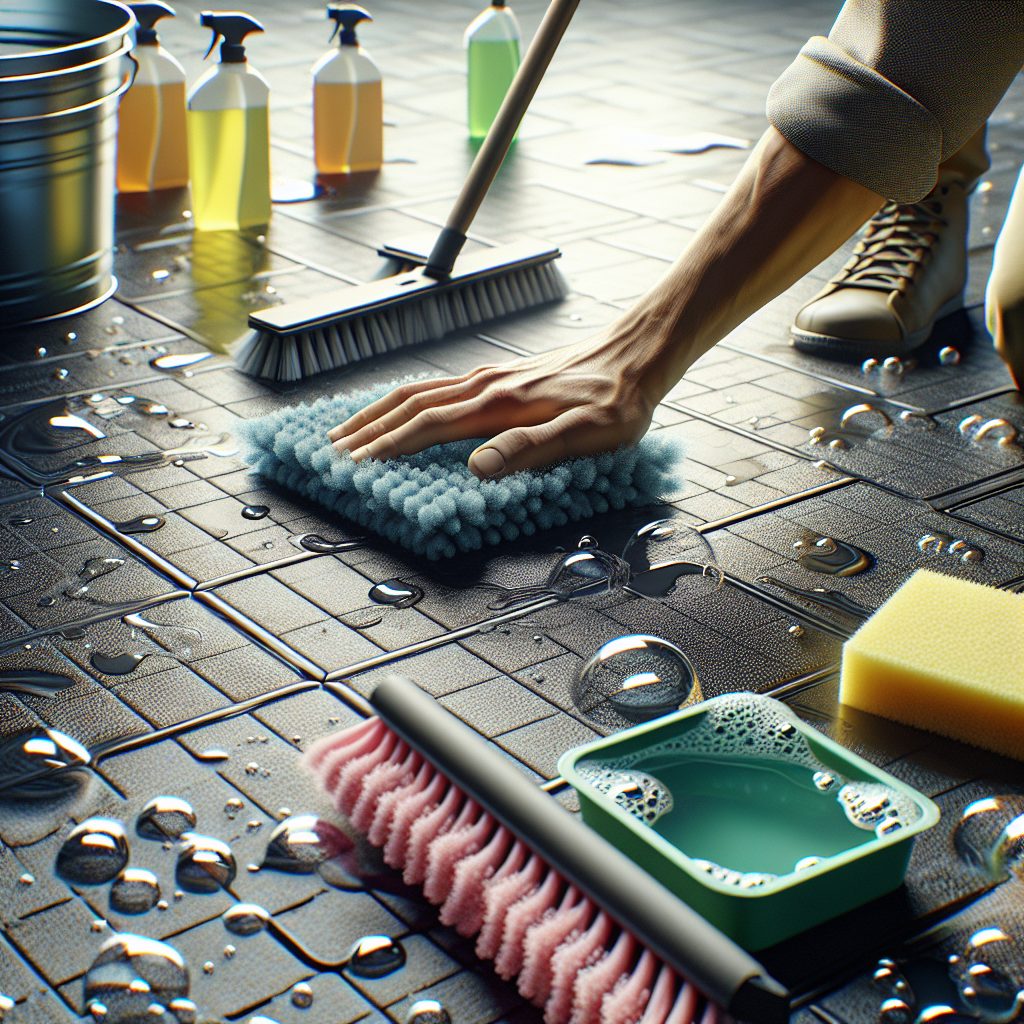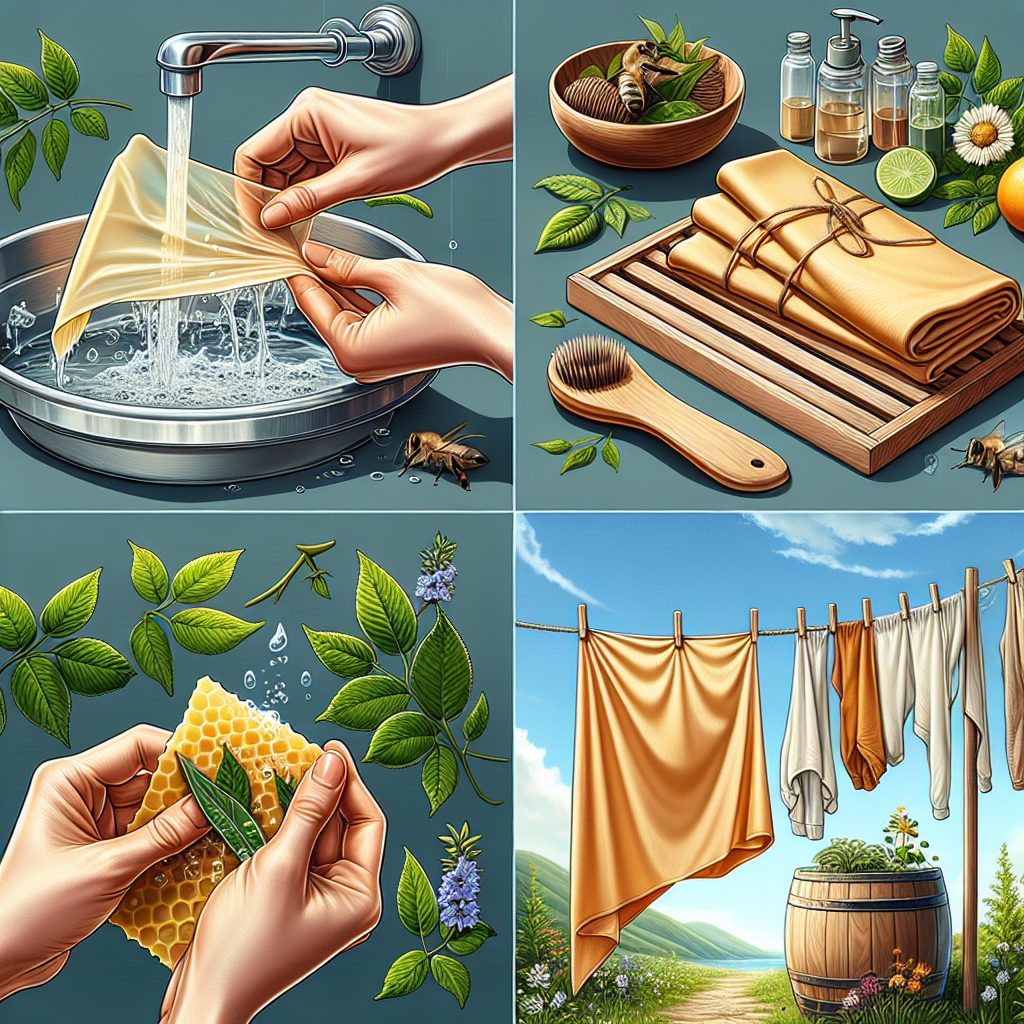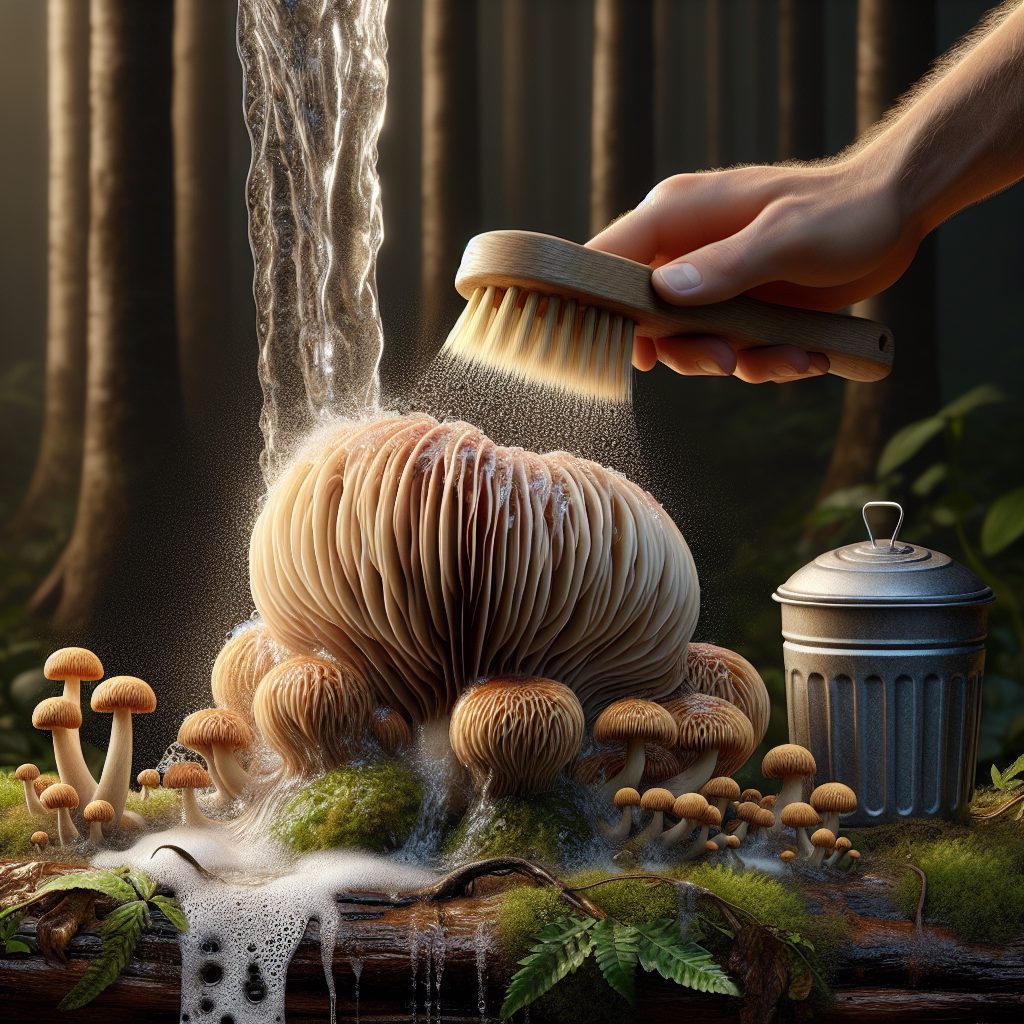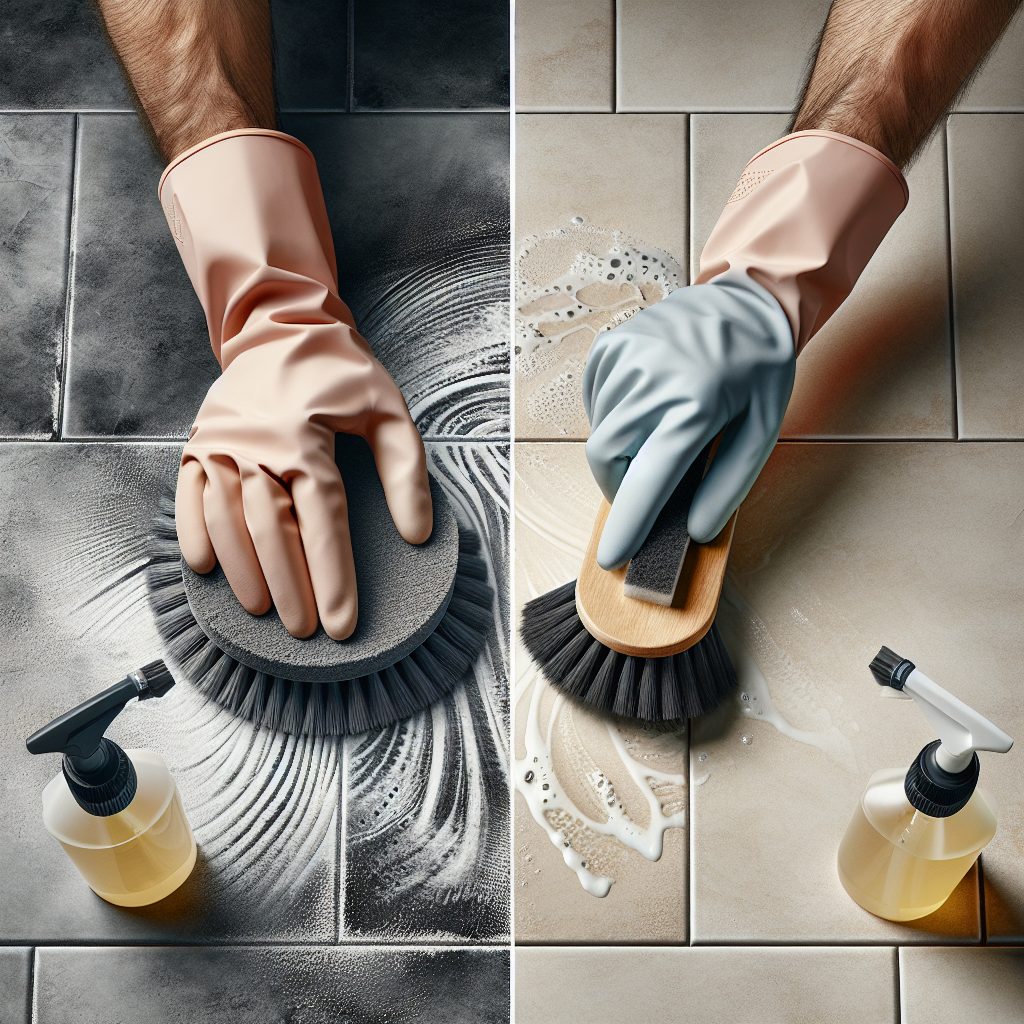
Rubber flooring is a versatile and durable option often chosen for its resilience and eco-friendly nature, found in gyms, industrial settings, and even residential spaces. What sets it apart from conventional flooring materials is not just its ability to withstand heavy foot traffic and equipment but also its sustainability. Sourced from renewable rubber trees or made from recycled tires, rubber flooring is both a practical and environmentally conscious choice. Moreover, its maintenance, when done correctly, can minimize the environmental impact further, ensuring that the ethics of sustainability remain intact from its installation to its day-to-day upkeep.
In light of its eco-friendly credentials, learning how to clean rubber flooring sustainably is not merely a matter of preserving its appearance, but also of upholding the environmental ethos it embodies. As the discourse on green cleaning solutions gains momentum, it becomes crucial to delve deeper into the methods that align with this philosophy. The forthcoming sections of this article are dedicated to unraveling the key takeaways for preserving your rubber flooring using sustainable cleaning practices that are gentle on the surface and the planet. From homemade solutions to the sparing use of water, we’re set to explore an array of approaches that promise to maintain the integrity of your rubber floors without sacrificing ecological considerations.
Key Takeaways
1. Vacuum or sweep regularly: Rubber flooring should be cleaned regularly to remove dirt and debris. Vacuuming or sweeping daily or as frequently as needed can prevent the buildup of grime that can be harder to clean if left to accumulate over time.
2. Use mild soap solutions: When mopping rubber floors, a mild soap solution is preferred over harsh chemicals, which can break down the material over time. Mix a small amount of a gentle, pH-neutral soap with water for mopping and avoid using solvent-based cleaners or abrasive scrubbers that can damage the flooring.
3. Tackle stains promptly: In case of spills or stains, it’s important to act quickly. Blot spills with a clean, dry cloth to prevent liquids from seeping into the rubber. For tougher stains, use a manufacturer-recommended cleaning product or a mild soap solution to gently scrub the area.
4. Consider professional cleaning: For deep cleaning or restoring the appearance of rubber flooring, professional cleaning might be necessary. Professionals have specialized equipment and cleaning solutions that can help maintain the quality and longevity of the flooring without causing damage.
5. Avoid steam cleaning: Unlike some other types of flooring, rubber should not be exposed to the high temperatures of steam cleaning. Doing so can cause the rubber to warp or lose its shape. Stick to the recommended cleaning procedures using neutral cleaners and soft cleaning tools.
What Is the Most Eco-Friendly Method for Cleaning Rubber Floors?
The quest for sustainable living extends into every corner of our lives, including how we maintain our flooring. Rubber flooring, a durable and versatile option for both commercial and residential spaces, requires specific care to preserve its longevity while minimizing environmental impact. In this detailed guide, we’ll explore eco-friendly cleaning techniques for rubber floors that align with sustainable practices.
Key Considerations for Eco-Cleaning Rubber Flooring
Before diving into the cleaning process, it’s important to understand some key considerations. Rubber flooring is sensitive to certain chemicals and requires gentle, non-toxic cleaners to avoid damage. Harsh solvents can cause rubber to degrade, making the choice of cleaning agents crucial. Additionally, sustainable cleaning not only focuses on the immediately visible results but also on the long-term health of both the environment and the individuals using the space.
Choosing Sustainable Cleaning Products
Opt for cleaners that are labeled biodegradable, phosphate-free, and contain natural ingredients. These products are less likely to harm the environment or contribute to indoor air pollution. It’s also beneficial to select concentrated solutions that you can dilute, reducing the overall packaging and transportation carbon footprint.
Proper Dilution Ratios
Using the right amount of product is just as important as the product itself. Overusing cleaning agents, even eco-friendly ones, is wasteful and can leave a slippery residue on rubber flooring. Always follow the manufacturer’s instructions for dilution to ensure effective and safe cleaning.
Step-by-Step Guide to Cleaning Rubber Flooring
Regular cleaning is vital to maintain the appearance and lifespan of rubber flooring. The process is straightforward but requires attention to detail.
Daily Dusting and Debris Removal
Begin by removing dust, dirt, and other particles. A microfiber mop or a vacuum with a soft brush attachment is ideal for this daily task to avoid scratching the surface.
Weekly Wet Cleaning
Once a week, or more often if needed, wet clean the rubber floor. Use a damp mop with your diluted eco-friendly cleaner. Rinse the mop frequently to prevent spreading grime and ensure no puddles of water are left on the flooring, as standing water can seep into seams and cause damage over time.
Addressing Stains and Spills Promptly
When spills occur, act quickly. Blot the spill with an absorbent cloth and then clean with your diluted cleaning solution. For tough stains, use a cleaning product specifically designed for rubber flooring, still making sure it aligns with your sustainable practices.
Maintaining Rubber Floors Long-Term
Good maintenance habits will reduce the need for deep cleaning and prolong the life of your rubber flooring. Place doormats at every entrance to minimize the dirt brought onto the floor. Encourage a no-shoe policy to keep pollutants off the surface. Additionally, consider applying a sealant designed for rubber flooring to provide an extra layer of protection against stains and spills.
Preventive Measures
Prevent scuffs and marks by using proper furniture protectors. Avoid dragging heavy objects across your rubber floors and regularly inspect for any signs of wear and tear. Repair or replace sections as necessary to prevent further damage.
Eco-Conscious Equipment for Cleaning Rubber Flooring
Choose equipment that enhances your sustainable cleaning efforts. Microfiber mops, for example, are more effective at trapping dirt and can be washed and reused numerous times, reducing waste. Moreover, use equipment that is durable and repairable, prioritizing long-lasting items over disposable ones.
How Can You Naturally Disinfect Rubber Flooring?
Natural disinfection is a key component of sustainable cleaning. Consider using a solution of vinegar and water for its natural antibacterial properties, or look for green-certified disinfectants that are safe for use on rubber flooring. Always perform a spot test in an inconspicuous area before applying any new cleaning solution to the entire floor.
Limitations of Natural Disinfectants
While natural disinfectants can be effective for everyday cleaning, they may not eliminate all types of pathogens. For high-risk areas or during illness outbreaks, you may need to use stronger disinfectants while still trying to choose the most environmentally responsible option.
What Are Sustainable Tips for Cleaning Rubber Flooring?
- Regularly sweep or vacuum to prevent dirt accumulation without using water or chemicals.
- Use distilled white vinegar and water as a homemade, eco-friendly cleaning solution.
- Invest in high-quality, eco-friendly cleaning products specifically designed for rubber floors.
- Avoid harsh chemicals and abrasive tools that can damage rubber flooring and harm the environment.
- Embrace preventive maintenance by placing doormats at entrances and implementing a no-shoe policy.
- Maintain proper ventilation during cleaning to protect indoor air quality.
- Recycle or repurpose old cleaning equipment and containers whenever possible.
- Consider using steam cleaning for a deep clean that requires no chemicals and very little water.
- Stay informed about new sustainable cleaning practices and products to constantly improve your routine.
- Engage with manufacturers and suppliers that prioritize sustainability in their operations and product lines.
What Is the Most Eco-Friendly Way to Clean Rubber Flooring?
The most eco-friendly method involves using a mixture of warm water and mild dish soap or a small amount of vinegar. Avoid harsh chemicals and opt for natural, biodegradable cleaners instead.
Can I Use Vinegar to Clean Rubber Flooring?
Yes, vinegar can be an effective cleaner for rubber flooring. It’s natural and non-toxic, making it a good choice for those looking to clean sustainably. Mix it with water to dilute its strength before use.
Is Steam Cleaning Safe for Rubber Floors?
Steam cleaning can be a sustainable option for rubber floors as it uses no chemicals and minimal water. However, high temperatures might damage rubber, so use steam cleaners with caution and on a low heat setting.
How Often Should I Clean My Rubber Flooring for Best Maintenance?
Rubber floors should be swept or vacuumed daily to remove dirt and debris, and mopped with a mild cleaning solution weekly to maintain their condition and longevity.
What Should I Avoid When Cleaning Rubber Flooring?
Avoid using abrasive tools or harsh chemical cleaners as they can damage the surface of rubber flooring. Also, refrain from using excessive water which can seep into seams and under the flooring, causing damage.
Why Is It Important to Use Sustainable Cleaning Methods on Rubber Flooring?
Sustainable cleaning methods ensure that the environment is not harmed by harsh chemicals and excessive water use. Additionally, it prolongs the life of the rubber flooring, reducing the need for replacements and waste.
Can I Use a Commercial Rubber Floor Cleaner?
Commercial rubber floor cleaners can be used if they are eco-friendly and free from harsh chemicals. Always read labels to choose products that align with sustainable cleaning practices.
What Are Some Natural Substances I Can Use for Spot Cleaning?
Baking soda paste for stain removal and a mixture of lemon juice or vinegar with water can be effective for spot cleaning rubber flooring without harming the environment.
How Do I Properly Rinse After Cleaning?
After cleaning with a cleaning solution, it’s important to rinse the floor with clean water to remove any soap residue, and then dry the floor to prevent slips and eliminate any water seepage.
Is It Safe to Use Essential Oils in Cleaning Solutions for Rubber Floors?
Essential oils can be used sparingly in cleaning solutions for rubber flooring to add a natural fragrance and some cleaning power, but ensure they do not contain compounds that could degrade the rubber.
Final Thoughts
In conclusion, sustainable cleaning of rubber flooring is not only beneficial for the environment but also crucial for preserving the quality and longevity of the flooring itself. By utilizing natural cleaners like vinegar, steam, and eco-friendly commercial products, and employing proper cleaning techniques, we can ensure that our cleaning habits contribute positively to our health and the planet. Let’s strive to adopt these sustainable practices not just for rubber flooring but in all areas of our daily cleaning routines.
Remember, the choices we make in maintenance and cleaning can have a significant impact on the environment. Whether for residential or commercial usage, rubber flooring presents a unique opportunity to demonstrate environmental responsibility through sustainable care. Embrace eco-friendly options and encourage others to do the same, fostering a cleaner, healthier, and more sustainable world for current and future generations.



